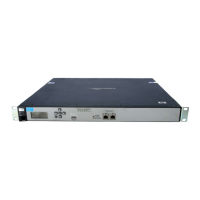User authentication, accounts, and addressing
HTML-based authentication
10-23
Authentication
If both the Local and Remote options are active, the controller first checks the local user
accounts (defined on the Controller >> Users > User accounts page). If the user does not
appear in the list, then the controller queries the remote server (Active Directory or
RADIUS).
Local
User logins are authenticated with the list defined on the Controller >> Users > User
accounts page.
Remote
Active Directory: User logins are authenticated via Active Directory. To setup Active
Directory support go to the Controller >> Security > Active Directory page.
RADIUS: User logins are authenticated via an external RADIUS server. To setup the
connection to an external RADIUS server, go to the Controller >> Authentication >
RADIUS profiles page.
Request RADIUS CUI: Enable this option to support the Chargeable User Identity
(CUI) attribute as defined in RFC-4372. The CUI is used to associate a unique
identifier with a user so that the user can be identified (for billing, authentication or
other purposes) when roaming outside of their home network.
Authentication timeout: Specify length of time (in seconds) that the controller will
wait for the RADIUS server to respond to authentication requests. If the RADIUS server
does not respond within this time period logins are refused.
General
RADIUS accounting: Enable this option to have the controller generate a RADIUS
START/STOP and interim request for each user. The controller respects the RADIUS
interim-update-interval attribute if present inside the RADIUS access accept of the
authentication.

